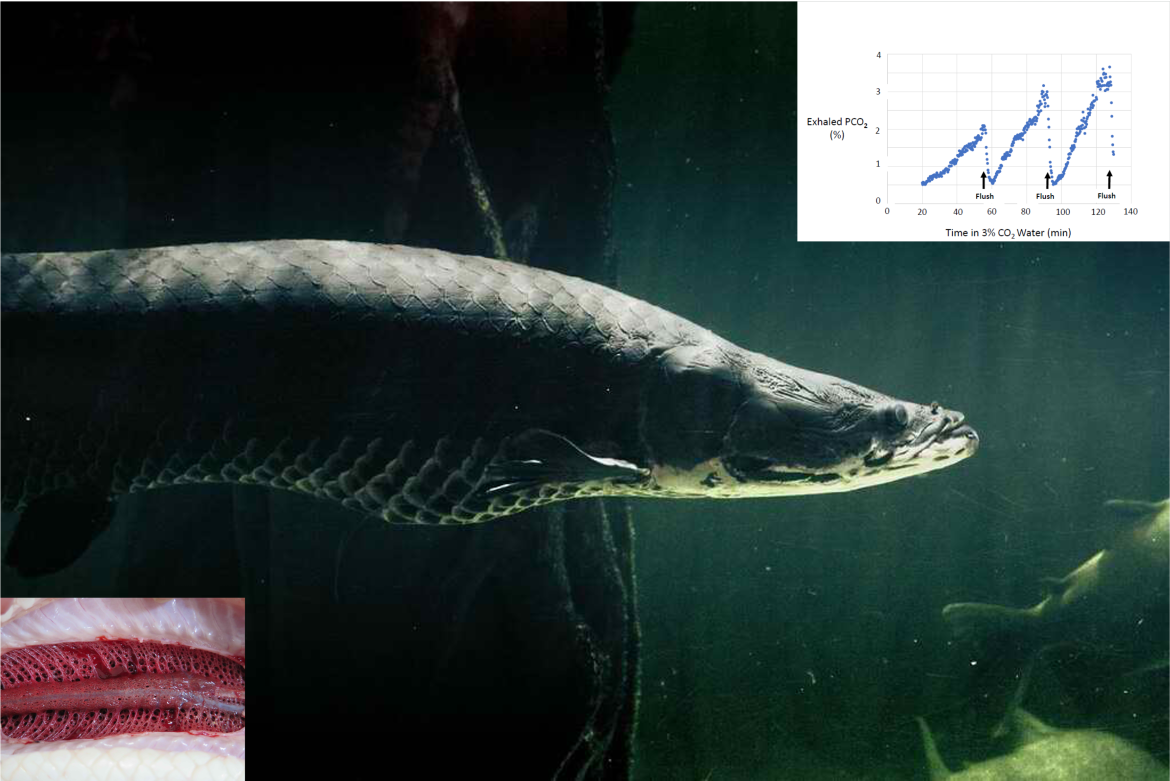
Abstract
The pirarucu is one of the very few obligate air-breathing fish, employing a gigantic, highly vascularized air-breathing organ (ABO). Traditionally, the ABO is thought to serve mainly for O2 uptake (ṀO2), with the gills providing the major route for excretion of CO2 (ṀCO2) and N-waste. However, under aquatic hypercapnia, a common occurrence in its natural environment, branchial ṀCO2 to the water may become impaired. Under these conditions, does the ABO become an important route of ṀCO2 excretion to the air? We have answered this question by measuring ṀCO2 and ṀO2 in both air and water phases, as well as the pattern of air-breathing, in pirarucu under aquatic normocapnia and hypercapnia (3% CO2). Indeed, ṀCO2 to the air phase via the ABO increased 2- to 3-fold during exposure to high water PCO2, accounting for 59–71% of the total, with no change in the dominant contribution of the ABO to ṀO2 (71–75% of the total). These adjustments were quickly reversed upon restoration of aquatic normocapnia. During aquatic hypercapnia, ṀCO2 via the ABO became more effective over time, and the pattern of air-breathing changed, exhibiting increased frequency and decreased breath volume. Ammonia-N excretion (86–88% of total) dominated over urea-N excretion and tended to increase during exposure to aquatic hypercapnia. We conclude that the ability of the ABO to take on the dominant role in CO2 excretion when required may have been an important driver in the original evolution of air-breathing, as well as in the functionality of the ABO in modern air-breathing fish.